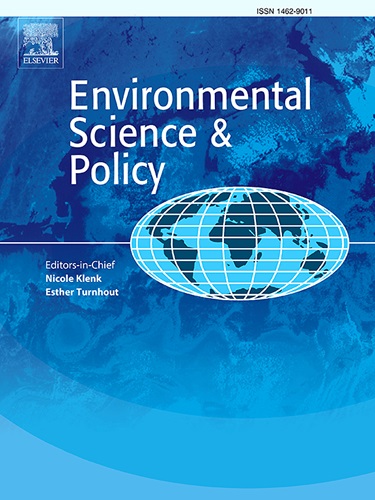Examining indicators of quality green and blue space: A mixed method study investigating multifunctionality
IF 4.9
2区 环境科学与生态学
Q1 ENVIRONMENTAL SCIENCES
引用次数: 0
Abstract
We are in a time of multiple crises, with record declines in biodiversity, a rapidly changing climate, and increasing economic divides. Governments are recognising the need for policies and management to address these multiple domains. Green and blue spaces are one such area where delivery of multiple functions is required. Understanding how quality of these spaces is measured in relation to their multifunctionality can contribute to improving policy, management, and decision making to produce better outcomes, for both people and the environment. The purpose of this study is to understand the indicators used to explore multifunctional green and blue quality, using Scotland as a case study. We apply the ‘Four Capitals’ (environment, people, community, business) framework to explore green and blue space quality, through a mixed methods design, including a scoping literature review, a survey, and stakeholder workshops. Our research identified 72 indicators of green and blue space quality. When categorised into the Four Capitals, the majority aligned with the environment or people categories. We consider the Four Capitals categories, along with the identified use and importance of the various indicators, to understand how well these account for multifunctionality. In addition to practical and policy implications of the quality indicators, our work also highlights the application of the Four Capitals framework, potential mismatches between policy needs, and the multiple demands placed on green and blue spaces, and the available scientific evidence.
检验绿色和蓝色空间质量指标:一种多功能的混合方法研究
我们正处在一个多重危机并存的时代,生物多样性急剧下降,气候迅速变化,经济差距日益扩大。各国政府正在认识到需要制定政策和管理来处理这些多重领域。绿色和蓝色的空间就是这样一个需要传递多种功能的区域。了解这些空间的质量是如何根据其多功能来衡量的,可以有助于改善政策、管理和决策,从而为人类和环境带来更好的结果。本研究的目的是了解用于探索多功能绿色和蓝色质量的指标,并以苏格兰为例进行研究。我们运用“四个资本”(环境、人、社区、商业)框架,通过一种混合方法设计,包括范围界定文献综述、调查和利益相关者研讨会,来探索绿色和蓝色空间的质量。我们的研究确定了72个绿色和蓝色空间质量指标。当被划分为四大首都时,大多数与环境或人的类别一致。我们考虑四大资本类别,以及各种指标的明确用途和重要性,以了解这些指标在多大程度上反映了多功能。除了质量指标的实际和政策意义外,我们的工作还强调了“四大首都”框架的应用、政策需求之间的潜在不匹配、对绿色和蓝色空间的多重需求以及现有的科学证据。
本文章由计算机程序翻译,如有差异,请以英文原文为准。
求助全文
约1分钟内获得全文
求助全文
来源期刊

Environmental Science & Policy
环境科学-环境科学
CiteScore
10.90
自引率
8.30%
发文量
332
审稿时长
68 days
期刊介绍:
Environmental Science & Policy promotes communication among government, business and industry, academia, and non-governmental organisations who are instrumental in the solution of environmental problems. It also seeks to advance interdisciplinary research of policy relevance on environmental issues such as climate change, biodiversity, environmental pollution and wastes, renewable and non-renewable natural resources, sustainability, and the interactions among these issues. The journal emphasises the linkages between these environmental issues and social and economic issues such as production, transport, consumption, growth, demographic changes, well-being, and health. However, the subject coverage will not be restricted to these issues and the introduction of new dimensions will be encouraged.
 求助内容:
求助内容: 应助结果提醒方式:
应助结果提醒方式:


